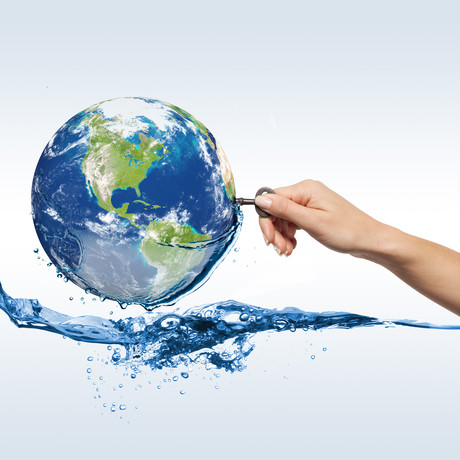Taking the lead on water security

New research from CDP, the international environmental reporting and data non-profit, has revealed that US$9.5 billion worth of city water projects are now open for investment. Released during World Water Week (27 August–1 September), CDP’s new infographic report ‘Who’s tackling urban water challenges’, produced in partnership with AECOM, a global infrastructure firm, and funded by Bloomberg Philanthropies, shows a dataset of global water action by cities and companies. Using information gathered from 569 cities and 1432 companies, each reporting their water management activity, it illustrates how global cities and companies are responding to the escalating challenge of climate change and urban population growth.
The cities most concerned about their water supply lie in Asia and Oceania (84%), with serious risks also identified in Africa (80%) and Latin America (75%). 63% of North American cities deem climate change a risk to water supply, with fewer cities concerned in Europe (34%). 196 cities reported risks of water stress and scarcity, 132 a risk of declining water quality and 103 a risk of flooding.
For example, in December 2015 Chennai faced the worst flooding from rain storms in the last 100 years. With a population of 7,600,000, many hundreds of people were killed, millions were without clean water and business operations were severely disrupted. The city is now investing in its resiliency with water conservation education, building a stormwater management system and additional infrastructure.
Together with US$14 billion of water impacts reported from companies, such as loss of production last year, 62% of cities are now working with companies to address water and climate change issues with 80 cities seeking US$9.5 billion for 89 water management projects. Water investment opportunities are greatest in Latin America (US$6.7bn), where Quito, Ecuador, is looking for US$800 million to manage its water supply. The city aims to build three hydropower stations and address the contamination of 246 km of Quito’s rivers and streams. Development in Latin America is followed by North America (US$2.7bn), Asia and Oceania (US$27.4m), Europe (US$22.3m) and Africa (US$6.19m).
Morgan Gillespy, Head of CDP’s Water Program, said:
“Our report shows just how crucial water management is becoming to our cities. We are seeing critical shifts in leadership from cities and companies in response to the very real threat of flooding, for example, to local economies. Combined with innovation and financial capital, this puts the tipping point for a sustainable economy in reach, and this data shows how important investors are in making this happen. These funds are just the tip of the iceberg in terms of where we must go, with live infrastructure projects currently calling out for US$9.5 billion. Furthermore, in conjunction with investment, we must take a holistic approach to water. Our vision is to achieve a secure and sustainable water supply by 2030, but to get here we need a sharp U-turn in how we manage our natural resources. Water must be recognised as a critical asset at city and board level, so it’s down to us all to build it into our thinking.”
Claire Bonham-Carter, Principal and City Resilience Lead, AECOM noted:
“From our work with cities around the world, water has consistently come up as a key resilience challenge. Many of them, regardless of size, from Mexico City, Mexico to Berkeley, California are addressing both long-term water supply issues as well as chronic urban flooding. In thinking about the immediate flooding and future water scarcity issues through a resilience lens, we are helping cities to address issues of socioeconomic disparity and environmental justice, in addition to solving their technical challenges.”
Explore how cities and companies are acting on water — the CDP infographic report ‘Who’s in charge of Water Governance’ with case studies and full data is available at www.cdp.net/cities.
Calls for efficiency standards for data centre water use
A peak water body has released a report outlining key approaches that will deliver efficient and...
Mobile water services fleet expands in Oceania
Veolia is expanding its mobile water services fleet in Oceania as part of the company’s...
Hunter Water completes major stormwater rehabilitation works
The upgrades are part of an ongoing commitment by Hunter Water to ensure the long-term...







